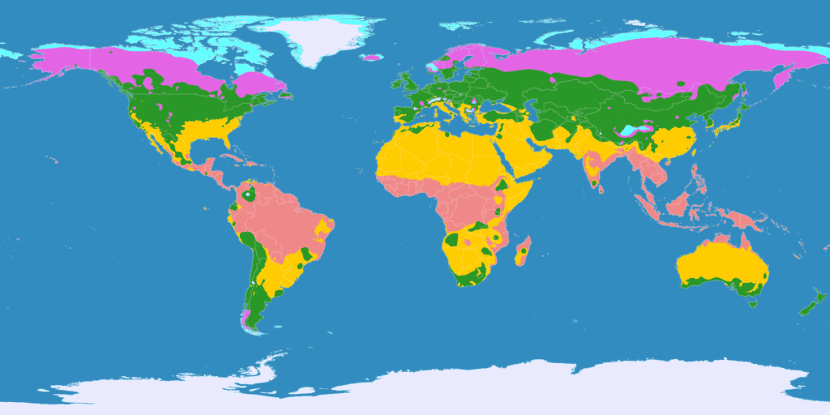
Image in which the different climatic zones are distinguished, with white being the icy zone, blue the subpolar zone, lilac the tundra zone, green the temperate zone, yellow the subtropical zone, and pink the tropical zone.
We are lucky to live in a world where there is a wide variety of life forms. Animals and plants that coexist in the best possible way: complementing each other, helping each other - although almost without knowing it - so that everyone, as a species, can continue to exist.
We owe this enormous variety to the planet itself. Being geoid shaped, the sun's rays do not reach the entire surface equally, so adaptation strategies are unique to each living being. Why? Why climate zones on Earth have their own characteristics.
The impact of the sun's rays on Earth
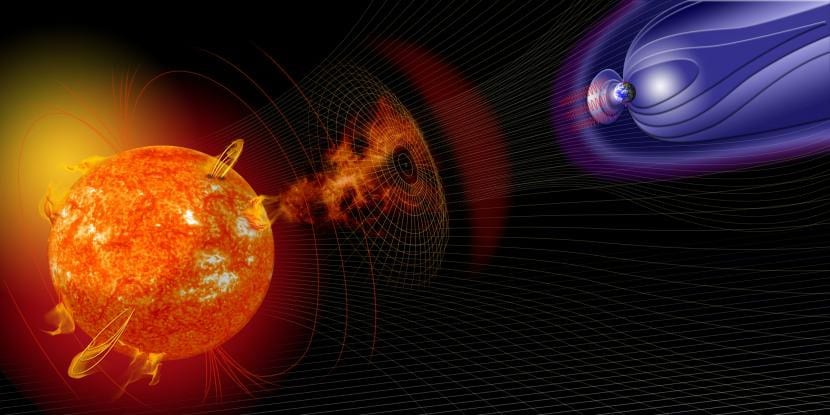
Before moving on to the topic at hand, let's first explain what impact the sun's rays have on our planet, and how they arrive.
Earth movements
Earth is a rocky planet that is, as we know, in constant motion. But it is not always the same, in fact, four types are identified:
Rotation
Every day (or, to be more exact, every 23 hours and 56 minutes) the Earth rotates on its axis, in a West-East direction. It is the one we notice the most, since the difference from day to night is enormous.
Translation
Every 365 days, 5 hours and 57 minutes, the planet goes around the Sun one revolution. However, during that time there are 4 days that will be very special:
- March 21: It is the spring equinox in the northern hemisphere, and the autumn equinox in the southern hemisphere.
- 22 June: It is the summer solstice in the northern hemisphere, and the winter solstice in the southern hemisphere. This day the Earth will reach its maximum distance from the sun, which is why it is known as aphelion.
- September 23: it is the autumnal equinox in the northern hemisphere, and the spring equinox in the southern hemisphere.
- December 22: It is the winter solstice in the northern hemisphere, and the summer solstice in the southern hemisphere. This day the Earth will reach its maximum proximity to the king star, which is why it is known as perihelion.
Precession
The planet on which we live is an ellipsoid with an irregular shape deformed by the gravitational attraction of the star king, the moon and, also although to a lesser extent, of the planets. This causes rocks on its axis very slowly, almost imperceptibly, during translational movement called »precession of the equinoxes». Due to them, the position of the celestial pole changes through the centuries.
Nutation
It is a back and forth motion of the Earth's axis. As it is not spherical, the attraction of the Moon on the equatorial bulge causes this movement.
How do the sun's rays reach the Earth?
As the planet is more or less spherical and taking into account the movements it makes throughout the days and months, solar rays do not reach all parts of the globe with the same intensity. In fact, the further the area is from the star king, and the closer you are to the Earth's poles, the less intense the rays will be. Depending on it, the different climatic zones have originated.
Climate zones
The climate is determined by meteorological parameters such as temperature, humidity, pressure, wind and precipitation. If we take into account only the temperature, defined areas are obtained according to the different classification systems. For example, in the Köppen system six climatic zones are distinguished depending on the temperature in each season:
Tropical zone
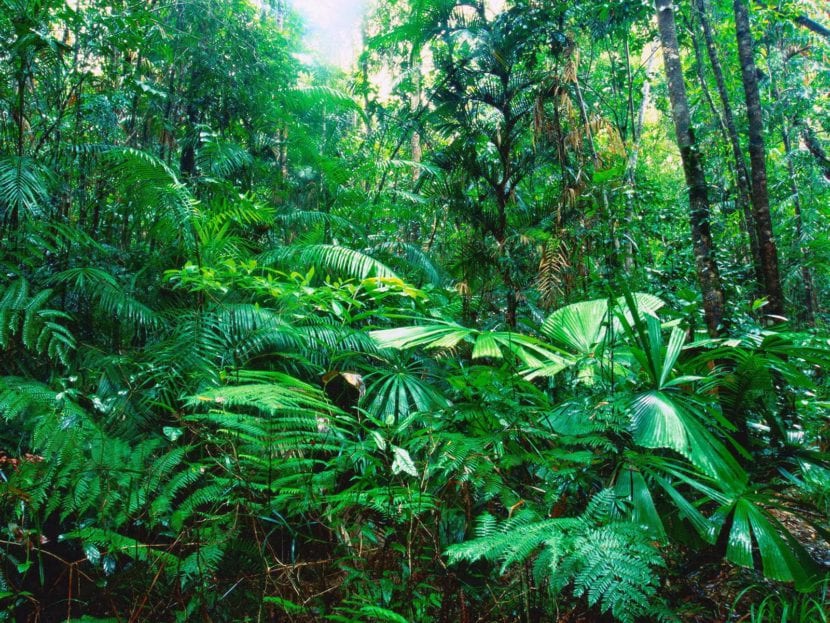
These areas have a tropical climate, which is found in the intertropical zone from 25º north latitude to 25º south latitude. The average temperature is always above 18ºC. This does not mean that frosts cannot occur, because they occur in high mountains and sometimes in deserts; however, the average temperature is high.
This weather It is due to the angle of incidence of solar radiation that occurs in these regions. They arrive almost perpendicularly, which causes the temperature to be high and the diurnal variations are also very high. In addition, it must be said that the equator is where the cold winds from one hemisphere meet with the warm winds from the other, which produces a state of constant low pressures called the intertropical convergence zone, so that it rains constantly for much of the time. of the year.
Subtropical zone
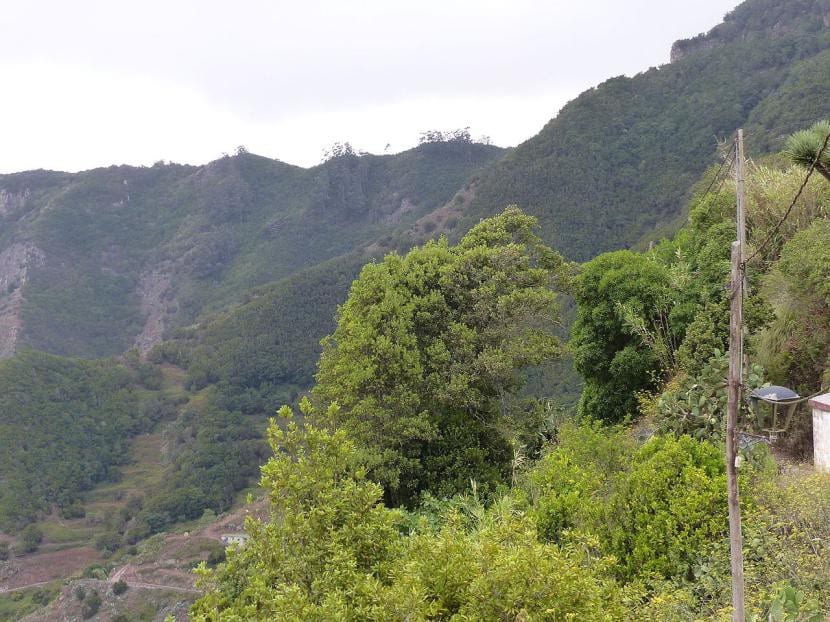
Tenerife (Canary Islands, Spain)
These areas have a subtropical climate, which is found in the areas near the Tropics of Cancer and Capricorn, in places like New Orleans, Hong Kong, Seville, Sao Paulo, Montevideo, or the Canary Islands (Spain).
The annual average temperature does not drop below 18ºC, and the average temperature of the coldest month of the year is between 18 and 6ºC. Some mild frosts may occur, but this is not the usual.
Temperate zone
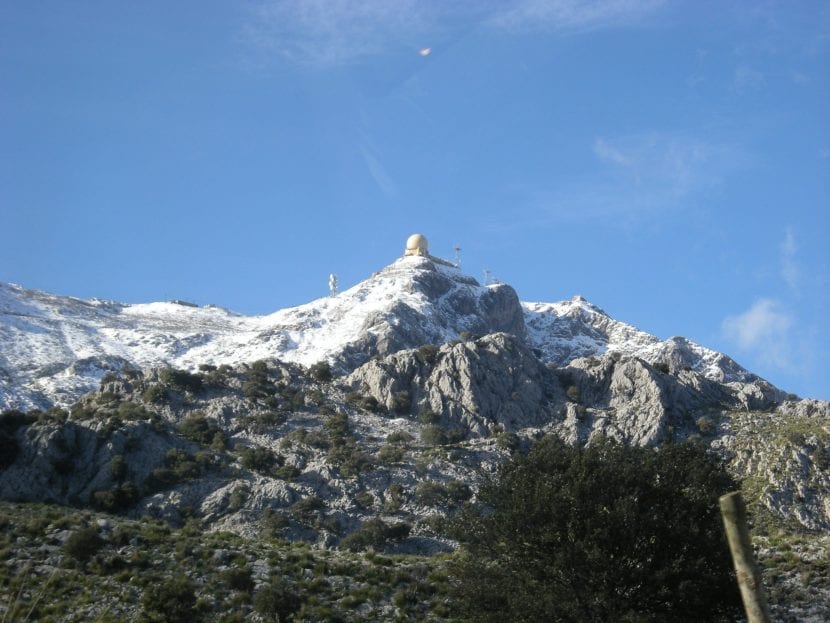
Puig Major, in Mallorca.
This area has a temperate climate, which is found in higher areas where temperatures are cooler than lower areas at the same latitude. The average temperature is above 10ºC in the warmest months, and between -3º and 18ºC in the cold months.
There are four well-defined seasons: spring with temperatures that increase as the days go by, summer with very high temperatures, autumn with temperatures that decrease as the days go by, and winter in which frost can occur.
Subpolar zone
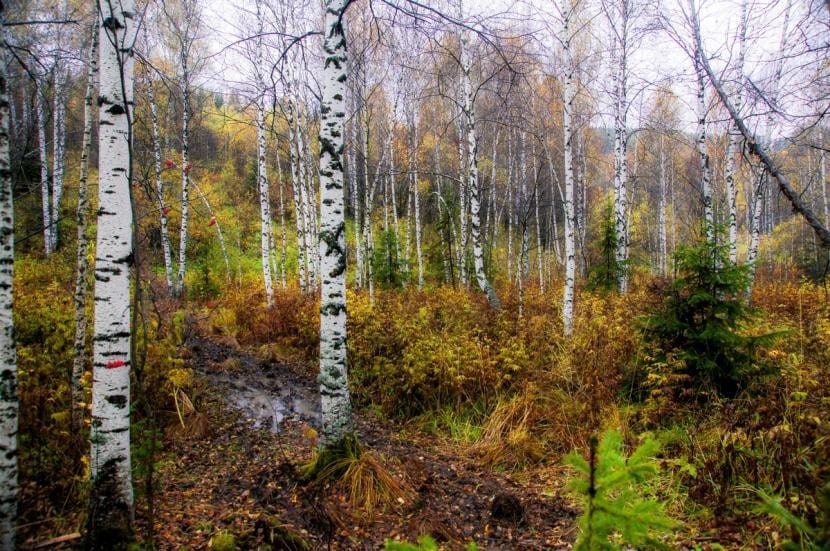
Siberia
This area has a subpolar climate, known as subarctic or subpolar. It is found between 50º and 70º latitude, as in much of Siberia, northern China, much of Canada, or in much of Hokkaido (Japan).
Temperatures can drop to -40ºC and in summer, which is a season that lasts from 1 to 3 months, exceed 30ºC.. The average temperature is 10ºC.
Tundra zone
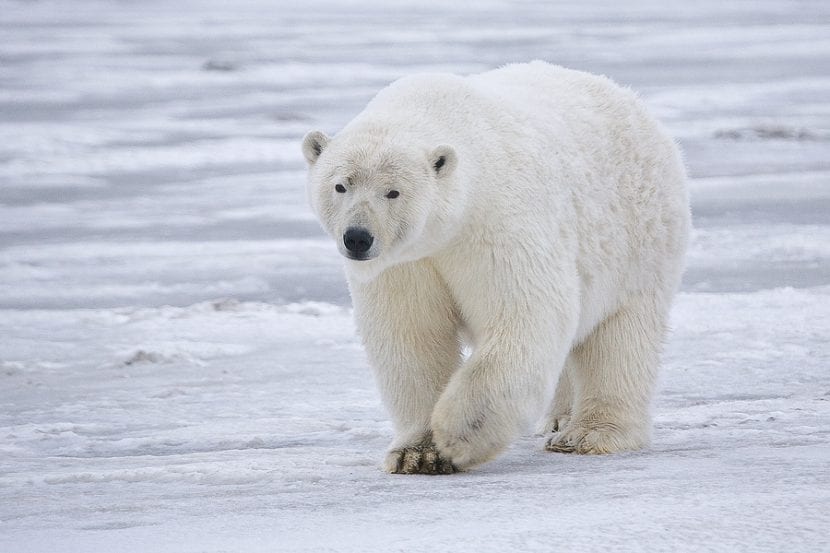
Polar bear in Alaska.
This area has a tundra climate or alpine climate. It is found in Siberia, Alaska, northern Canada, southern Greenland, the Arctic coast of Europe, extreme southern Chile and Argentina, and in some areas of northern Antarctica.
If we talk about temperatures, the average winter minimum is -15ºC, and during the short summers they can vary from 0 to 15ºC.
Frigid zone

Arctic
This area has a glacial climate, and are found in the Arctic and Antarctica. The climate in these places is very cold, especially in Antarctica where a temperature of -93,2ºC has been recorded since the solar rays arrive with very little intensity.
And with this we are done. We hope it has been of interest to you. 🙂